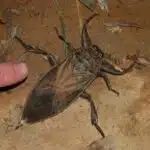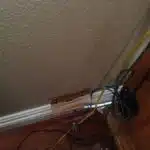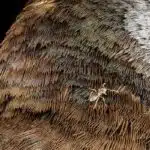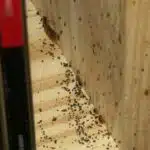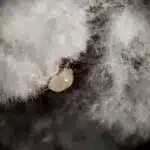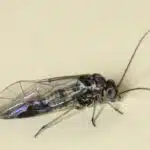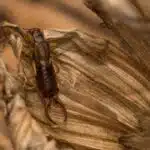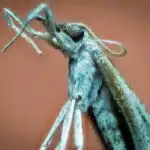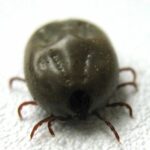Palmetto bugs, also known as American cockroaches, are one of the most common household pests in the southern United States. These insects can grow up to two inches in length and have a reddish-brown coloration. They are often found in warm and humid areas, such as kitchens, bathrooms, and basements. Palmetto bugs are not only unsightly but can also pose health risks by spreading bacteria and allergens in your home. Therefore, it is essential to take steps to get rid of these pesky creatures.
As a pest control expert, I have encountered many cases of palmetto bug infestations throughout my career. In this article, I will share with you some effective ways to eliminate palmetto bugs from your home. From simple preventative measures to more advanced treatment options, you will learn how to keep these unwanted guests at bay and protect your family’s health and well-being. So let’s dive into the world of palmetto bug control and learn how to get rid of them for good!
Identifying Palmetto Bugs
Picture this: You walk into your kitchen to grab a midnight snack, only to be greeted by the sight of a large, reddish-brown bug scurrying across your countertop. If you live in the southeastern United States, chances are that what you just encountered is a palmetto bug.
Palmetto bugs are a type of cockroach that can grow up to two inches long and often cause panic when spotted inside homes. They’re especially common in warm, humid climates and tend to be most active during the summer months. These pests are known for their nocturnal behavior and can often be found hiding in dark, damp places like basements and crawl spaces.
Understanding palmetto bug behavior and seasonal patterns is key to identifying an infestation before it gets out of hand. While these insects can thrive indoors year-round, they tend to be more prevalent during warmer months when they have easy access to food and water sources. By knowing what signs to look for and taking preventative measures early on, homeowners can avoid dealing with larger-scale problems down the line. With that said, let’s dive into some tips for understanding the risks of palmetto bug infestations.
Understanding The Risks Of Infestation
Assessing the risks of palmetto bug infestations is crucial in preventing these pests from taking over your home. Palmetto bugs can carry harmful bacteria and diseases, putting your health and well-being at risk. They are also capable of causing structural damage to buildings, which can lead to costly repairs.
To assess the risks of a potential infestation, start by identifying any areas in or around your home where palmetto bugs may be attracted. These include areas with high moisture levels such as bathrooms, kitchens, and basements. It is also important to inspect any cracks or crevices in walls or floors that could provide an entry point for these pests.
Prevention methods are essential in reducing the risks associated with palmetto bug infestations. These include sealing all entry points in your home, eliminating sources of food and water, and keeping your home clean and clutter-free. Regularly cleaning and maintaining areas prone to moisture buildup can also help prevent these pests from settling in your home. By implementing these prevention methods, you can significantly reduce the risk of a palmetto bug infestation and protect yourself and your family from potential harm.
By assessing the risks associated with palmetto bug infestations and implementing effective prevention methods, you can create a safe living environment for yourself and those around you. In the next section, we will discuss how creating a clean environment is an essential step in preventing palmetto bugs from entering your home.
Creating A Clean Environment
While it is important to understand the risks of palmetto bug infestation, it is equally crucial to create a clean environment to prevent their presence. Some may argue that chemical pesticides are the most effective way to get rid of these pests. However, eco-friendly cleaning and hygiene practices can be just as effective without harming the environment or risking exposure to harmful chemicals.
Eco-friendly cleaning products such as vinegar, baking soda and lemon juice can be used to clean surfaces where palmetto bugs are commonly found. These natural alternatives not only have strong cleaning properties but also repel pests due to their acidic nature. Additionally, keeping a clean and clutter-free living space can help reduce hiding spots for palmetto bugs.
Maintaining proper hygiene practices such as regularly taking out the garbage and wiping down kitchen counters after use can also prevent palmetto bug infestations. Since these pests are attracted to food particles and moisture, it is essential to keep your living spaces dry and free from any food debris. By adopting these simple yet effective habits, you can significantly reduce the risk of palmetto bug infestations in your home.
Transitioning into using natural repellents, there are several options available for those who prefer non-chemical methods of pest control. From catnip oil to bay leaves, natural repellents have been proven effective in repelling palmetto bugs without causing harm to humans or the environment. In the next section, we will discuss these natural repellent options in detail and how they can be used in conjunction with eco-friendly cleaning and hygiene practices for optimal pest prevention results.
Using Natural Repellents
One effective way of getting rid of palmetto bugs is by using natural repellents. These are DIY solutions that you can make at home with common ingredients found in your kitchen or garden. One example is essential oils, which have been proven to be effective in repelling insects. Some essential oils that work well against palmetto bugs include peppermint, lemon eucalyptus, and lavender.
To use essential oils as a repellent, mix a few drops of your chosen oil with water in a spray bottle and apply it to areas where palmetto bugs are commonly found. You can also soak cotton balls in the oil and place them around your home. Another way to use essential oils is by adding a few drops to a diffuser or humidifier.
Aside from essential oils, there are other natural repellents that you can use against palmetto bugs. These include catnip, bay leaves, and garlic. All of these items emit strong scents that repel insects and can be placed around your home as needed.
- Place bay leaves in cabinets and drawers
- Crush fresh garlic and leave it on windowsills
- Plant catnip around the perimeter of your house
- Use citronella candles on outdoor patios
- Sprinkle diatomaceous earth near entry points
Incorporating natural repellents into your pest control strategy can help eliminate palmetto bugs from your home without relying on harmful chemicals. However, it’s important to remember that these remedies may not be as effective as professional pest control methods for severe infestations. In the next section, we’ll discuss another step you can take towards preventing palmetto bugs from entering your home – sealing entry points.
Sealing Entry Points
One of the most effective ways to get rid of palmetto bugs is by sealing entry points. These pests can enter your home through even the smallest cracks and crevices, so it’s essential to identify and seal these openings. DIY methods for sealing entry points include using caulk or weatherstripping to fill gaps around doors, windows, and pipes. You should also inspect your attic vents and crawl space vents to ensure that they are adequately screened.
While DIY methods can be effective, it’s often best to seek professional services when dealing with palmetto bugs. Professional pest control companies have the experience and tools necessary to locate and seal all potential entry points thoroughly. They may also use specialized equipment such as infrared cameras to detect hidden cracks that are not visible to the naked eye.
By sealing entry points, you can significantly reduce the number of palmetto bugs in your home. However, it’s important to note that this is just one step in a comprehensive pest control plan. In addition to sealing entry points, reducing moisture is also critical in preventing palmetto bug infestations. In the next section, we’ll discuss how you can accomplish this task effectively.
Reducing Moisture
One effective way to reduce the palmetto bug population in your home is by minimizing moisture. Palmetto bugs thrive in areas that are damp and humid, making it necessary to control moisture levels in your living space. High humidity levels attract these pests and provide them with a suitable environment to breed and multiply.
One way to reduce humidity is by using a dehumidifier. Dehumidifiers can help lower the moisture content in the air, making it less hospitable for palmetto bugs. Keeping your living space dry also has additional benefits such as reducing mold growth, preventing musty odors, and improving indoor air quality. It is important to note that using a dehumidifier alone might not eliminate palmetto bugs completely, but it can significantly reduce their population.
Another effective way of reducing moisture levels is through ventilation improvement. Proper ventilation allows for better air circulation, which prevents the buildup of moisture in confined spaces like bathrooms and kitchens. Installing exhaust fans or opening windows can help improve airflow, and this will make your living space less hospitable for palmetto bugs since they prefer stagnant environments. Improving ventilation will also have benefits such as reducing indoor allergens and improving overall indoor comfort.
Reducing moisture levels is an essential step towards managing palmetto bugs effectively. The use of dehumidifiers and improving ventilation are two effective methods of controlling humidity levels indoors. In the next section, we will cover another crucial step towards eliminating palmetto bugs – trapping them.
Trapping Palmetto Bugs
One effective method of eliminating palmetto bugs is through trapping, a process that involves capturing and removing the pests without killing them. While this may seem like a daunting task, there are DIY solutions available for those who wish to try their hand at trapping the bugs themselves. This involves setting up traps around the home in areas where the bugs are known to frequent.
However, for those who do not feel comfortable attempting DIY solutions or have a more severe infestation, professional trapping services are available. These companies specialize in safely and effectively trapping palmetto bugs using advanced techniques and equipment. They can also provide ongoing pest control services to prevent future infestations.
Regardless of whether one chooses to use DIY methods or seek professional help, trapping palmetto bugs is an important step towards eliminating these pests from your home. It is a humane way to deal with the problem while also ensuring that the bugs do not return in the future. In the next section, we will discuss how bait stations can be used as another effective method for controlling palmetto bug populations.
Using Bait Stations
Trapping palmetto bugs is an effective way to control their population. However, it may not be enough to completely eliminate them from your home. Bait stations are another option that can complement trapping and help get rid of palmetto bugs for good.
Bait stations work by attracting palmetto bugs with a bait that contains poison. Once the insects consume the bait, they will die within a few days. One advantage of using bait stations is that they can target palmetto bugs that are hiding in hard-to-reach areas, such as behind walls or under appliances.
To maximize bait station effectiveness, proper placement is crucial. Place the stations in areas where you have seen palmetto bug activity or where they are likely to travel, such as near doors and windows or in dark corners of your home. It’s important to avoid placing bait stations near areas where food is stored or prepared as it could contaminate your food.
List:
- Consider using bait stations in addition to trapping for optimal palmetto bug control.
- Proper placement of bait stations is key to their effectiveness.
- Avoid placing bait stations near areas where food is stored or prepared.
By incorporating both trapping and baiting methods and properly placing the bait stations, you can effectively control the palmetto bug population in your home. But if these methods do not work, the next step would be applying insecticides to eradicate them completely from your house.
Applying Insecticides
- Insecticides can be classified by their active ingredient, method of action and formulation.
- Common active ingredients for controlling palmetto bugs are pyrethrins and pyrethroids.
- Application methods for insecticides vary from area-wide treatments to spot treatments.
- It is important to consider the type of formulation being used, as well as the safety of the applicator and the environment.
Types Of Insecticides
When it comes to getting rid of palmetto bugs, there are various types of insecticides available in the market. The spray insecticides are the most commonly used ones. They can be applied easily and directly onto surfaces where the bugs have been spotted. These sprays contain chemicals that kill the bugs on contact or repel them from entering a particular area.
Another type of insecticide is baiting techniques, which targets the palmetto bug’s feeding habits. Baiting is an effective method of controlling and eliminating these pests as they are attracted to the bait and consume it, leading to their death. Baiting can be done using gel or granular baits placed in areas where the bugs have been seen or known to frequent.
It is important to note that different types of insecticides work differently depending on factors such as the size of infestation, location, and severity of the problem. Therefore, it is essential to seek professional help from a pest control expert who can assess your situation and recommend the best type of insecticide for your needs. By using these methods effectively, you can eliminate palmetto bugs and protect your home from future infestations.
Application Methods
When it comes to applying insecticides for palmetto bug control, there are different techniques that can be employed. One of the most common methods is spraying, which involves directly applying insecticide onto surfaces where the bugs have been sighted. This approach is effective in killing or repelling the pests on contact. However, it is important to observe safety precautions when using spray insecticides as they can be toxic and pose health risks if not handled properly.
Another application method for controlling palmetto bugs is fogging. This technique involves using a machine that releases a mist of insecticide into the air, covering a large area with the chemical. Fogging can effectively eliminate pests hiding in hard-to-reach areas such as cracks and crevices but poses potential hazards if not done with caution. Proper protective equipment must be worn during fogging to avoid inhaling toxic fumes.
Lastly, dusting is another application method used for palmetto bug control. In this technique, an insecticide powder is applied to areas where the bugs are known to frequent or hide. Once the pests come into contact with the powder, they will ingest it and die eventually. Dusting should only be done in areas inaccessible to children and pets since it can cause respiratory irritation when inhaled. Professional pest control experts can provide guidance on selecting appropriate application techniques based on your specific needs and preferences.
Seeking Professional Help
Professional pest control services are an effective way to get rid of palmetto bugs. While there are many DIY methods available, professional help offers numerous benefits that make it a superior choice. One of the most significant benefits is the expertise and experience that professionals bring to the table. They know how to locate and eliminate these pests in a safe manner without causing harm to your family or pets.
Another advantage of professional help is cost-effectiveness. In many cases, people spend money on DIY treatments that do not work, only to end up hiring professionals eventually. This cycle can be expensive and time-consuming. By choosing professional treatment from the beginning, you can save yourself both time and money in the long run.
In summary, seeking professional pest control services is a smart decision when dealing with palmetto bugs. The benefits of their expertise and experience coupled with cost-effectiveness make it a clear choice for homeowners struggling with pest infestations. In the next section, we will discuss some factors to consider when choosing the right pest control company for your needs.
Choosing The Right Pest Control Company
If you have attempted to get rid of palmetto bugs on your own and have not seen any progress, it may be time to seek the assistance of a professional pest control company. Pest control experts have the knowledge and tools necessary to identify the root cause of the infestation and effectively eliminate it. Additionally, they can provide guidance on how to prevent future infestations.
When choosing a pest control company, it is important to consider pricing and customer satisfaction surveys. Pricing can vary significantly among companies, so it is essential to obtain quotes from multiple providers before making a decision. It is also helpful to review customer satisfaction surveys or testimonials from previous clients to ensure that the company has a proven track record of success.
Once you have selected a pest control provider, they will work with you to develop an effective treatment plan based on your specific situation. This plan may include multiple visits over time and ongoing preventative measures. By working with a professional pest control company, you can feel confident that your home will be free of palmetto bugs both now and in the future.
Preventing Future Infestations
Identifying entry points is the first step in preventing future infestations of palmetto bugs. Common entry points include cracks or crevices in walls, doors, windows, and foundations.
Eliminating attractants is essential to preventing future infestations of palmetto bugs. Removing food sources such as garbage and pet food, caulking cracks and crevices, and sealing gaps around windows and doors can help deter palmetto bug infestations.
Reducing moisture levels can also help prevent palmetto bugs from entering a structure. Inspecting plumbing, repairing leaky pipes and faucets, and removing standing water can help reduce the likelihood of an infestation.
Finally, it is important to regularly inspect your home for palmetto bugs, especially during the warmer months. Regularly cleaning and vacuuming can help detect and eliminate any palmetto bugs that have managed to enter the structure.
Identifying Entry Points
Identifying entry points is crucial in preventing future palmetto bug infestations. These pests are known to sneak into homes through various openings, including cracks, holes, and gaps around doors and windows. Common hiding spots include basements, attics, crawl spaces, and kitchens. As an expert in pest control, it is essential to educate homeowners on these potential entry points to help them prevent future infestations.
Prevention strategies for palmetto bugs include sealing any cracks or gaps around doors and windows with weatherstripping or caulking. It’s also important to repair any damaged screens and install door sweeps at the bottom of exterior doors to eliminate gaps that may provide entry points for these pests. Regular cleaning of common hiding spots can also help reduce the chances of infestation.
As a pest control expert, it’s important to emphasize the importance of identifying entry points for preventing future palmetto bug infestations. By educating homeowners on common hiding spots and prevention strategies such as sealing cracks and gaps, repairing screens, installing door sweeps, and regular cleaning of potential hiding spots, we can help ensure a pest-free home environment for our clients.
Eliminating Attractants
Another effective prevention strategy for palmetto bug infestations is eliminating attractants in and around the home. Palmetto bugs are attracted to cluttered areas and food sources, so it’s important to keep homes clean and tidy. Reducing clutter can eliminate potential hiding spots for these pests, making it easier to detect and address any infestations. Proper food storage is also essential in preventing palmetto bug infestations, as these pests are attracted to crumbs and spills.
As a pest control expert, it’s important to educate homeowners on the importance of eliminating attractants in preventing future palmetto bug infestations. Emphasizing the need for proper cleaning and organization can help reduce the chances of an infestation occurring in the first place. Encouraging homeowners to store food properly and promptly clean up any spills or crumbs can also help reduce the likelihood of attracting these pests.
In conclusion, identifying entry points and eliminating attractants are two crucial prevention strategies for palmetto bug infestations. As pest control experts, it’s our responsibility to educate homeowners on these strategies to ensure a pest-free home environment for our clients. By emphasizing the importance of reducing clutter and proper food storage, we can work together with homeowners to prevent future palmetto bug infestations.
Educating Yourself On Palmetto Bugs
One must first educate themselves on the behavior of palmetto bugs to effectively get rid of them. Palmetto bugs are a type of cockroach that can grow up to two inches in length and have a reddish-brown color. They are typically found in warm, humid environments such as Florida and other southern states.
Identifying behavior is crucial when it comes to getting rid of palmetto bugs. They are nocturnal creatures that prefer dark, damp areas like basements and crawl spaces. One common misconception is that they only infest dirty homes, but this is not true. Palmetto bugs can infest even the cleanest homes if the conditions are right.
Educating oneself on palmetto bugs goes beyond just identifying their behavior. It also involves debunking common misconceptions about them. For example, many people believe that spraying insecticides will completely eliminate them, but this often only provides temporary relief. In reality, a multi-pronged approach including proper sanitation and sealing entry points is necessary for long-term control.
Transition: While educating ourselves on palmetto bugs is important, it’s also crucial to dispel some common myths about them. Let’s take a closer look at some of these misconceptions and why they may not be accurate solutions for getting rid of these pesky insects.
Common Myths About Palmetto Bugs
Debunking Myths About Palmetto Bugs
Palmetto bugs are a common household pest that can cause distress and panic for homeowners. Unfortunately, there are many common misconceptions surrounding these insects, which can lead to ineffective methods of control. One of the most persistent myths is that palmetto bugs only infest dirty or unsanitary homes. In reality, these bugs can be found in any environment, from the cleanest homes to the dirtiest.
Another myth about palmetto bugs is that they only come out at night. While it’s true that these insects are nocturnal and prefer to stay hidden during daylight hours, they can still be active during the day if they feel threatened or hungry. Additionally, palmetto bugs have been known to fly towards sources of light at night, which can be particularly alarming for homeowners.
A third commonly held misconception is that palmetto bugs are harmless and don’t pose a threat to humans. While it’s true that these insects don’t bite or sting, they can carry harmful bacteria and contribute to indoor allergens. In addition, their feces and shed skins can trigger allergies in susceptible individuals. It’s important for homeowners to take steps to control palmetto bug populations in their homes in order to reduce health risks and prevent damage to property.
Transition: Now that we’ve debunked some of the myths surrounding palmetto bugs, it’s time to take action against them. In the next section, we’ll discuss effective methods for controlling these pests and preventing future infestations.
Conclusion: Taking Action Against Palmetto Bugs
Palmetto bugs are a common household pest that many people dread encountering. In fact, according to recent studies, approximately 80% of American households report having experienced a palmetto bug infestation at some point. This statistic is alarming and highlights the severity of the problem.
Luckily, there are effective methods for getting rid of these pesky insects. One option is to use traps, which come in various types such as sticky or pheromone-based traps. These traps work by attracting and trapping the bugs so that they can be disposed of safely. Another option is to create your own DIY repellent using natural ingredients such as essential oils or vinegar.
To further aid in your efforts to eliminate palmetto bugs from your home, consider implementing the following bullet point list:
- Seal cracks and crevices around windows and doors to prevent entry.
- Keep food stored in airtight containers and clean up spills promptly.
- Reduce clutter in your home and regularly clean areas where palmetto bugs may hide.
By taking these steps and using effective methods such as traps or DIY repellents, you can successfully get rid of palmetto bugs from your home and prevent future infestations. Remember, it’s important to act quickly when dealing with these pests in order to minimize their impact on your household.
Conclusion
Palmetto bugs are a common household pest that can be quite difficult to get rid of. However, with the right knowledge and techniques, it is possible to eliminate them from your home. The first step in getting rid of palmetto bugs is identifying them correctly. These pests are often mistaken for cockroaches but have distinct physical characteristics such as their reddish-brown color and long antennae.
Once you have identified palmetto bugs, it is important to understand the risks associated with an infestation. These pests can carry harmful bacteria and pathogens that can lead to diseases such as salmonella and E.coli. Therefore, it is crucial to maintain a clean environment by regularly cleaning up crumbs and spills, disposing of garbage properly, and keeping food in sealed containers.
Using natural repellents such as boric acid or diatomaceous earth can also help deter palmetto bugs from entering your home. Sealing entry points like cracks in walls or windows can prevent future infestations from occurring. It is also essential to educate yourself on palmetto bugs by understanding their behavior patterns and habits.
Despite common myths about palmetto bugs being harmless or only found in dirty environments, taking action against these pests is necessary for maintaining a healthy living space. By following these steps and consulting with a pest control expert if necessary, you can effectively get rid of palmetto bugs from your home for good.
Image Credits
- “palmetto bug” by cyanocorax (featured)


